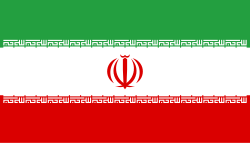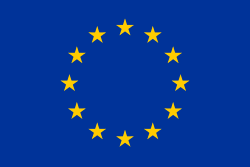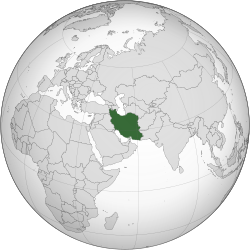Portál:Írán
به نام خداوند بخشنده مهربان |
 |  |  |
به درگاه ایران خوش آمدید |
e
Írán (persky ایران, původně Árjan, neboli země Árjů) je muslimský stát v Přední Asii, dříve nazývaný Persie. Na západě sousedí s Irákem, na severozápadě s Tureckem, Arménií a Ázerbájdžánem, na severu s Turkmenistánem, na východě s Afghánistánem a Pákistánem. Na jihozápadě ho omývají vody Perského zálivu a Arabského moře, na severu je to moře Kaspické. Počtem obyvatel (71 milionů) a rozlohou cca 1,6 milionu km² náleží Írán mezi 20 nejlidnatějších a největších zemí světa.
Pokračování článku...
e Článek
| e Obrázek
| e Zprávy
|
e Osobnost | e Články Íránské katolické diecéze Íránské zpravodajské služby Lidé ze Saqqez Náměstí v Íránu Íránské seznamy Státní symboly Íránu | e Wikimedia |
e Příbuzné portály | e Informace
|
e Zásady pro přepis perských jmen a názvů
Pokračování... |
Média použitá na této stránce
Flag of Iran. The tricolor flag was introduced in 1906, but after the Islamic Revolution of 1979 the Arabic words 'Allahu akbar' ('God is great'), written in the Kufic script of the Qur'an and repeated 22 times, were added to the red and green strips where they border the white central strip and in the middle is the emblem of Iran (which is a stylized Persian alphabet of the Arabic word Allah ("God")).
The official ISIRI standard (translation at FotW) gives two slightly different methods of construction for the flag: a compass-and-straightedge construction used for File:Flag of Iran (official).svg, and a "simplified" construction sheet with rational numbers used for this file.
Autor: unnamed (Mozilla Foundation), Licence: MPL 1.1
This icon, known as the "feed icon" or the "RSS icon", was introduced in Mozilla Firefox in order to indicate a web feed was present on a particular web page that could be used in conjunction with the Live bookmarks function. Microsoft Internet Explorer, Opera and some other browsers have adopted the icon in order to promote a de facto standard.
Vlajka České republiky. Podoba státní vlajky České republiky je definována zákonem České národní rady č. 3/1993 Sb., o státních symbolech České republiky, přijatým 17. prosince 1992 a který nabyl účinnosti 1. ledna 1993, kdy rozdělením České a Slovenské Federativní republiky vznikla samostatná Česká republika. Vlajka je popsána v § 4 takto: „Státní vlajka České republiky se skládá z horního pruhu bílého a dolního pruhu červeného, mezi něž je vsunut žerďový modrý klín do poloviny délky vlajky. Poměr šířky k její délce je 2 : 3.“
Georgian flag in Pantone MS.
A bas relief sculpture at Naqsh-e Rostam, Iran, depicting the triumph of Shapur I over the Roman Emperor Valerian.
A pair of U.S. Navy Grumman F-14A Tomcat aircraft from Fighter Squadron VF-211 Fighting Checkmates in flight over Iraq in 2003. VF-211 was assigned to Carrier Air Wing 1 (CVW-1) aboard the aircraft carrier USS Enterprise (CVN-65) for a deployment to the Mediterranean Sea and the Indian Ocean from 28 August 2003 to 29 February 2004. After this deployment VF-211 converted to the Boeing F/A-18F Super Hornet and was redesignated VFA-211.
Ganj Nameh Inskriptionen
Autor: Mostafa Saeednejad from Tehran, Iran, Licence: CC BY 2.0
Damavand(5,610 meters).
Damavand 1
Shah Mosque from Ali Qapu Palce in Esfahan, Iran.
State emblem of the Islamic Republic of Iran. U+262B, stylized version of Arabic script of Allah (الله, with the central lam shaped to look like a sword.) The emblem is also an overlaid rendering of La Ilaha Illa Allah (There is only one God and that is 'Allah'). The exact shape of the emblem and an algorithmic ruler-and-compass construction is described in the national Iranian standard at IRANIAN ISLAMIC REPUBLIC FLAG, ISIRI 1, 1371, 3rd edition, March 1993 in Persian. The emblem was designed by Hamid Nadimi, and was officially approved by Ayatollah Khomeini on May 9, 1980.
























